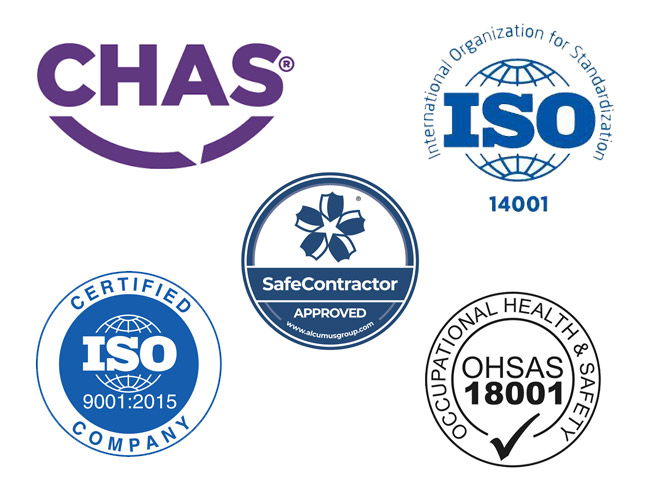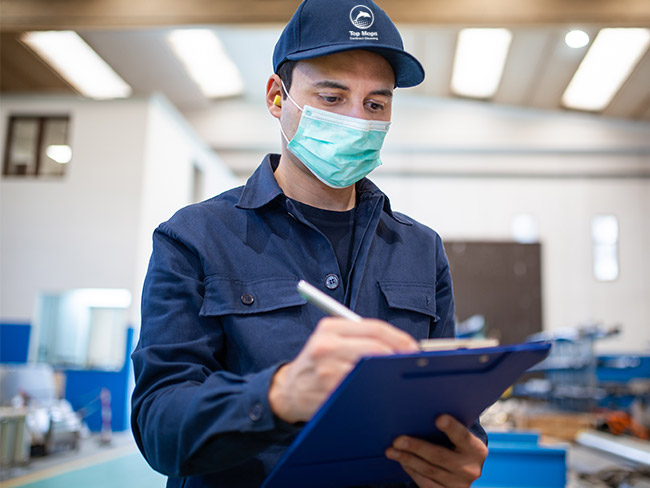When we look at cleaning, people tend to assume it’s an easy job, anyone can do it. It’s ‘a bit of hoovering’ or dusting. Not often does anyone take the time to stop and consider all aspects of cleaning, the impact it has on a site or at home and what goes into ensuring that cleaning operatives are safe, that they are using environmentally friendly chemicals and what it takes to comply with Health and Safety within the workplace.
This is why we are proud members of BICs. BICs (The British Institute of Cleaning Science) is the global leading governing body within the cleaning industry. When I mention BICs to people, too often they’ve never heard of it, and ask two questions; 1. What is BICs? 2. What does BICs mean?
BICs teaches the correct practice in how to clean, it teaches COSHH, and it teaches basic Health and Safety within the workplace. To be able to say you are a Licenced to Practice Member of BICs is so much more than it sounds but all our operatives have these basic practices taught to them for all sites.

Health and Safety at work is so important and we take it very seriously. We proudly home CHAS, Safe Contractor, ISO 9001, ISO 14001 and OHSAS 18001 which has recently migrated to ISO 45001; as well as being BICSc Corporate Members of BICs.
Within the training we cover a number of things that come through from our BICs training.
- Firstly, its checking that the site is safe, there are no signs of infestation and no damage to any of the property.
- Next, it’s to alert people to your being there. A great way to show someone you are in the area and cleaning is to use Hazard Signs or Wet Floor Signs. This works to keep both the operative safe and anyone else on site too, to avoid accident or injury.
- One of the most important things that is too often overlooked is checking over the cleaning equipment. Checking the hoovers for exposed or broken wires, checking the hoover bag (if used) isn’t full, and doing this in the correct manner as to ensure that if there was something sharp in the bag that had been hoovered up in error that it isn’t at risk while checking. Checking hoovers hoses for blockages or holes and checking for dust or debris on the motor that can cause a fire hazard if left as it can cause the motor to overheat. Other things to check would be things such as mops, and it doesn’t matter if they are flat mops, dolly mops – all should be inspected to ensure that they are in full safe working order.
- As a company we ensure each and every site has it’s own health and safety manual on site. This contains things such as site-specific risk assessments, first aid and fire regulation information for the site. Emergency contact information. COSHH Data sheets for all chemicals we supply to the site for our operatives to use. User manuals for any electrical equipment on site. It would hold policies and procedure documents and our COSHH colour coding in line with our Infection control and cross contamination prevention policies.
- Under COSHH staff are shown not only how to use the chemicals correctly, but also how to store them correctly. Correct storage of the chemicals is just as important as correct usage of them. While there is a very quick and obvious risk to health and safety if a chemical is used incorrectly or mixed with another chemicals storage is just as much of a risk with it ultimately being a fire risk if not stored safely.
- All staff are not only shown how to use, mix and dilute all chemicals correctly they are also provided the correct PPE for this. As technology progresses, we are becoming less reliant on the need to know how to dilute correctly, or even know the correct ratio for this, as with recent technology of automatic measures or dosing systems where this is done for you, there is still a risk that they could break or not measure correctly and then the knowledge BICs and in turn we teach becomes invaluable.
- This past year, it has been drilled into everyone that we all need to wash our hands more, this is no different around cleaning. Best practice shows that hands should be washed at the beginning of a cleaning shift, at the end of the cleaning shift and should PPE being worn (such as gloves) fail throughout the shift, that hands are washed to remove any possible chemical residue before putting on new, clean PPE.
- At the end of the cleaning shift, it’s important to take care of the cleaning equipment, to wipe it down, clean it out correctly and store it safely. In an ideal world all sites would have a dedicated cleaning room that offered a well-lit, well ventilated area with a sink and a slue to ensure the risk of damage, accident or risk to health are as low as possible; most buildings aren’t built with this in mind so we work closely with all our sites to ensure the can replicate this as best we can.

As a company we have our own in-house Health and Safety Manager who arranges all site Risk Assessments, Method Statements and keeps on top of all COSHH, Policies and Procedure updates and who also manages all our accreditations. We also use outside expertise in Wight Safety Consultancy, where Mark Elliott has over 15 years’ experience in all aspects of health and safety, fire, and risk assessments within the workplace.
2021 saw us as a company taking the next steps into providing better health and safety for all employees and our sites by one of our managers training to become an accredited BICs trainer, and furthermore a fully accredited BICs Assessor. This move means that as a company we have the opportunity to train, assess and award all staff to BICs standards and to become Licenced Members to Practice.